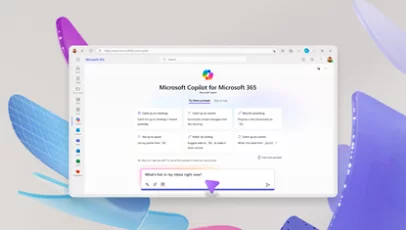LAM
by MicrosoftLAM is a new AI model by Microsoft that autonomously operates Windows programs, converting user requests into specific actions like launching applications or controlling devices.
What is LAM?
LAM, or "Large Action Model," is an AI model developed by Microsoft designed to autonomously operate Windows programs. Unlike traditional language models, LAM converts user requests into specific actions, such as launching applications or controlling devices. It is optimized for Microsoft Office and other Windows applications, achieving a 71% task completion success rate in Word, outperforming GPT-4.
Key Features of LAM
- User Intent Interpretation: Accurately understands user intent from natural language, voice, or images.
- Action Generation: Translates intent into specific commands, including GUI operations or API calls.
- Dynamic Planning and Adaptation: Breaks down complex tasks and adjusts plans based on environmental changes.
- Specialization and Efficiency: Trained for specific tasks, improving accuracy and reducing computational overhead.
- Environment Interaction: Integrates with agent systems to interact with external tools and maintain memory.
- Autonomous Execution: Executes tasks autonomously, from planning to feedback-based adjustments.
- Automated Software Tasks: Performs office automation tasks like document editing and data entry.
Technical Principles of LAM
- Multimodal Input Understanding: Interprets diverse inputs like natural language, voice, or images.
- Data Collection and Preparation: Trains on user requests, environmental states, and corresponding actions.
- Model Training: Uses supervised fine-tuning and reinforcement learning for specific actions.
- Environment Integration: Integrated into agent systems for real-world interaction.
- Evaluation: Rigorously tested for reliability, robustness, and safety before deployment.
Application Scenarios of LAM
- Automated Software Tasks: Enhances office productivity through document editing and data entry.
- Smart Home Management: Controls devices like lighting and temperature for a smarter living environment.
- Customer Service and Support: Provides real-time assistance and technical support via chatbots.
- E-commerce: Automates online shopping processes, from product search to payment.
- Education and Training: Acts as a virtual teaching assistant, offering personalized learning plans.
Model Capabilities
Model Type
multimodal
Supported Tasks
Office Automation
Smart Home Management
Customer Support
E-Commerce
Education
Tags
AI
Windows
Automation
Microsoft
Office Automation
Task Execution
User Intent
Dynamic Planning
Smart Home
Customer Support
Usage & Integration
Screenshots & Images
Additional Images




Stats
101
Views
0
Favorites

